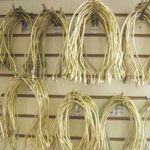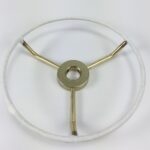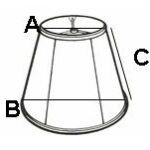General Lighting
Also referred to a “general” lighting, ambient lighting is intended to fill the space with overall illumination providing enough for overall orientation and general task purposes. The level of ambient light should be able to be managed to provide a range of brightness specific to the purpose of the space at a given time; eg., bright perhaps for cleaning, but lower levels to create a more intimate or relaxed setting.
lighting that is used to accent or create emphasis on shapes, textures, finishes and or colors, as in a sculpture, window treatments, or any other object of interest. Accent lighting creates a focus or foci of visual interest in a given space. Accent lighting can also be used to direct the eye along a visual field or through a “path”. It is recommended that be effective, accent lighting should be a minimum of three times the amount of ambient light in the same area.
lighting that is designed and installed to light a specific area where a task can be performed.
a lighting term that refers to the effect of lighting (most often from above) certain wall surfaces such as draperies, stone, brick or a work of art. Grazing creates high and low (shadows) levels of light on targeted surfaces.
a lighting term that refers to a lighting technique that produces a relatively smooth and even illumination on the wall, with no shadowing. Wall washing is a technique often used to highlight one or more pieces of art work.
Chandeliers
As a starting point, add the room dimensions together. If the area for your chandelier is 14′ x 14′, add 14 + 14 = 28; your chandelier should be about 28” wide. At the same time, you need to consider the style and design of the fixture you like as well as the ceiling height, as each of these factors may influence the width of the fixture you chose.
As a general rule, hang your chandelier 36″ above the top of the table; however, if the ceiling is a 10’ or higher, the chandelier should be hung a little higher.
In most instances, the width of your chandelier should be about 6″ narrower than your table on each side, for a total of 12″ narrower than your table; so if your table is 40″, your chandelier should be approximately 28”.
Your ceiling height should be at least 10’ to hang a multi-tier chandelier.
Hallway / Entryway Ceiling Fixtures
Typically, ceiling fixtures should not hang below 7’6″
Picture Lights
House of Troy, one of the largest manufacturers of picture lights, recommends that your picture light be approximately one-half the width of your artwork minus the frame.
Wall Sconces
As a rule, your sconces should be hung at 6′ off the floor.
Yes, all wall sconces are hard wired, and most are controlled by a wall switch. There are a few wall sconces, available directly from the manufacturer, with a switch on the back plate, but most are controlled by a wall switch. Someone who does lamp repairs may be able to put a switch on the back plate of your wall sconce.
Wall Swing Arm Lamps
Most wall swing arm lamps are shipped with 8′ of cord and a cord cover in the same metal finish as the fixture. Cord cover length will vary depending on the fixture. If you chose, however, either you or your electrician can convert the wall swing arm lamp to hardwire by removing the cord cover and pulling the cord through the center hole of the mounting plate and wiring directly to a junction box in the wall.
Reading Lamps
All useful task or reading light comes from below the lampshade if a fabric lampshade, or directly from a metal lampshade. Therefore, regardless of the height of the lamp, the most effective reading light offers a fabric lampshade whose bottom hits the reader somewhere between the nose and the shoulder, and a metal lampshade that is focused right over the task at hand.
Lampshades
The means by which the lampshade is supported on the lamp. The most common fitter is called a “washer” fitter, a small washer shape supported in the middle top of the shade by three or four wires extending to the top sides of the shade. A shade with a washer fitter is designed to sit on a harp. A shade with a clip fitter attaches to the lamp by means of a metal wire that fits or “clips” onto the light bulb; most shades with clip fitters are small so as to minimize the weight resting on the bulb. A lampshade with a uno fitter is designed to screw onto the end of a socket fitted to a downbridge lamp – or one in which the light bulb is pointed down. A lampshade with a chimney fitter is designed to be used for lampshades that are intended to sit on a hurricane – most commonly an electrified oil lamp.

A harp is the metal wire lamp part that fits into a saddle and supports the lampshade. Harps come in 1/2″ increments. The size or height of the harp is totally dependent upon the lampshade selected for the lamp – the taller the shade, the taller the harp. One important objective in selecting the correct harp is to ensure that the lampshade blocks from view the harp saddle and socket.

A hardback lampshade is made by laminating a fabric or paper onto a plastic liner. Each shade has a top ring and a bottom ring, and the laminated fabric is manufactured to attach to each ring, and then glued on one or more sides, forming the seam. The inner plastic liner can be translucent or opaque, while the outer, visible fabric can be any type of woven fabric including linen, silk, satin, muslin, or one of many different types of parchments or paper.


